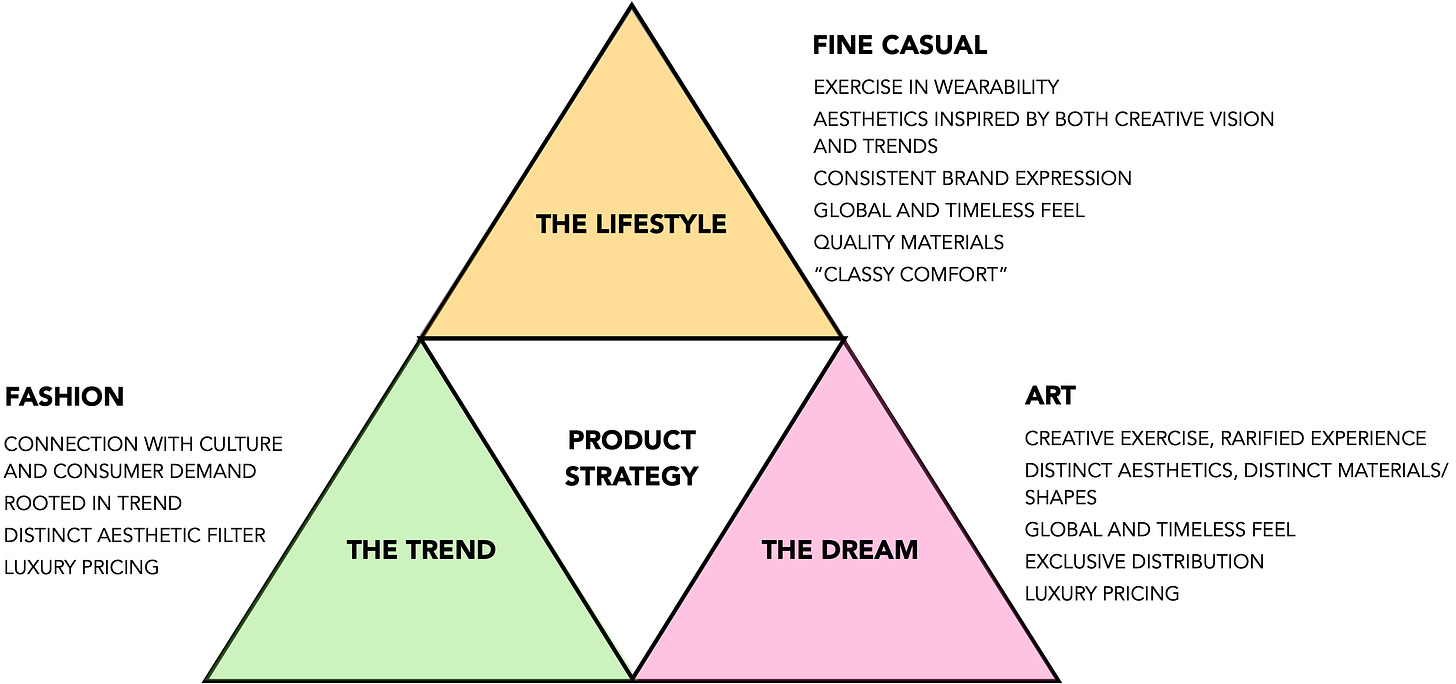Welcome to the Sociology of Business. The Sociology of Business offers a paid membership program. Paid options are for the members of this community who want to be the first to access everything from Web3 brand-building to the new business models and emerging creative formats. Since its inception, the Sociology of Business has been the source code for many other analyses, strategies and brand-building approaches. Members will now have the front-row seat. If you are not yet subscribed, join the community by subscribing below and joining the Sociology of Business Discord. You can find my book, The Business of Aspiration on Amazon and you can find me on Instagram and Twitter. For those new here, in my last analysis, Funny Business, I explored why mischief, humor and playfulness are critical for brand survival.
A winning product strategy takes into account brand and business objectives, target audiences and an integrated marketing and merchandising approach. Product strategy is closely linked to a company’s competitive strategy as it powers the market segment and growth model that a brand pursues.
Here is how brand and business objects, target audience and comms and merchandising differ in the three different market segments:
The Dream. Concept pieces, press and PR, brand partnerships with cultural pioneers, and ATL advertising all revolve around perpetuating a brand’s magic; brands are managed as artistic endeavors, with products being pieces of art and physical stores designed as galleries. Home pages and Instagram accounts have a strong conceptual flair and print and OOH advertising is abstract, non-literal, witty and playful, and often surreal and humorous - ads are works of art themselves. Creative consistency is high.
The Trend. Trend pieces, PR, advertising, social media and influencers are all designed to spur mass consumer demand. Brands are managed as celebrities and constant spotlight is the ultimate goal. Whoever and whatever keeps a brand in the spotlight - collaborations, influencers, drops, and events - is useful. Communications features popular personalities and influencers is reflects the most trendy aesthetic. Ads are memes. Physical stores are mini-Disneylands: amusement parks. Creative consistency is low, as brand expression is shaped by current trends.
This analysis is for paid subscribers. To access, choose one of the paid subscription options.
Keep reading with a 7-day free trial
Subscribe to The Sociology of Business to keep reading this post and get 7 days of free access to the full post archives.





